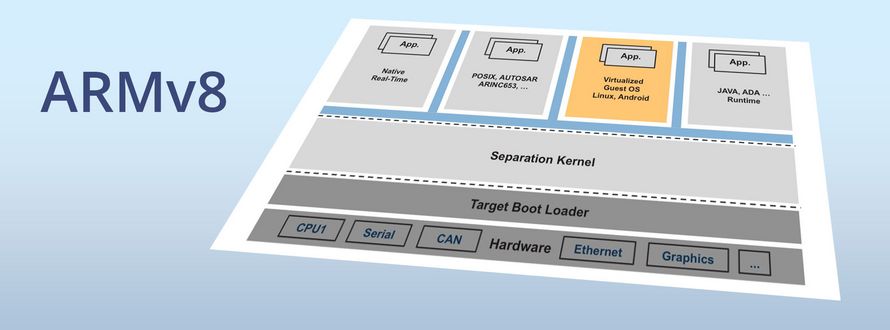ARM Community: ARMv8-R, architecture innovation for embedded systems
You may have seen this latest announcement from ARM. The ARMv8-R SoC opens up new business opportunity mainly for MPU based systems in automotive and industrial environment. SYSGO already supports ARMv8-A since May 2016 as one of the first OS vendors. With its PikeOS Real Time Operating System and the included hypervisor we are serving solutions for Automotive, Aerospace, Defense, Industrial and Transportation.
The ARM cortex family is wide spread and will continue to be used in applications where functional safety is important. SYSGO has already outstanding experience in supporting customer certifications based on ISO 26262 by leveraging the experience from other industry specific certifications e.g. transportation with EN 50128 up to SIL 4 and Aerospace and Defense with DO-178B/C up to DAL A.
Here we can support customers to certify their systems by using a certifiable RTOS with hypervisor supporting space and time partitioning. SYSGO provides with PikeOS certification-relevant documentation including test and verification evidences and validation test suites to ensure the correct behavior of PikeOS in the customer target hardware. There is deep know-how in the company on how to create customer specific BSPs that helps getting systems certified. The safety-related documentation is part of our Certification Package and shows compliance to ISO 26262 requirements. The package is a license add-on to our product.
As PikeOS is an RTOS that includes a hypervisor functionality meaning that other guest OS like Linux can be executed on top of PikeOS without disturbing any safety or security relevant software running in another partition, most of the customer-driven safety requirements can be achieved. This also helps to reduce total cost and time-to-market, as the hypervisor can host partitions in which legacy code can be re-used or available customer applications can run independently. This argument is quite important, as a car has more than 100 million lines of code, partly in ECU’s or Applications that already run safe, well tested and should not be touched at all.
Read the Press Release
More information at www.sysgo.com/automotive

